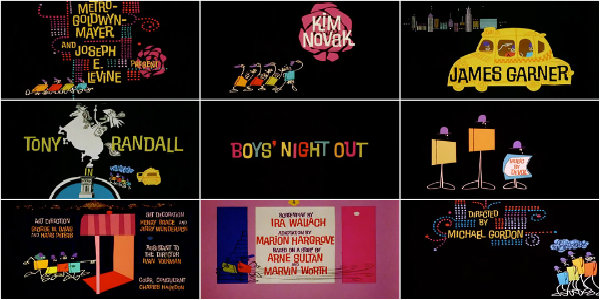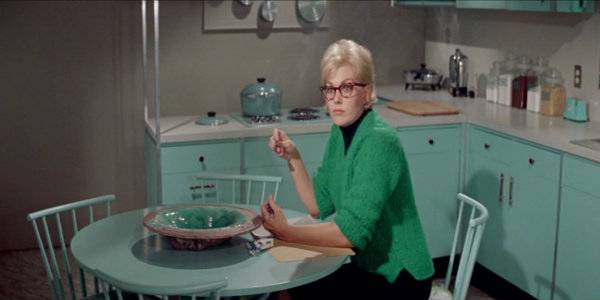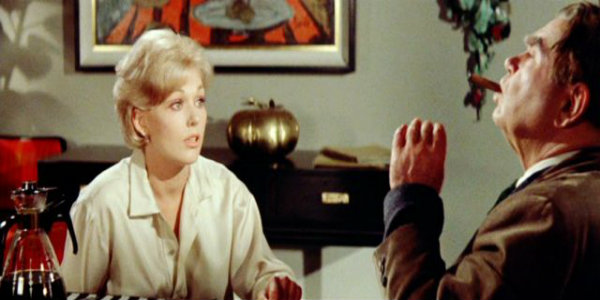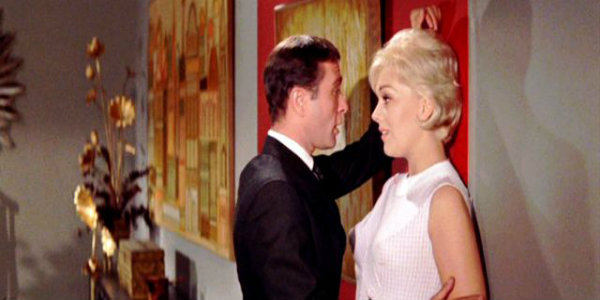
Picture it, Paris 1961.
The wind is cool, the coffee is warm and bitter, and you’re a businesswoman falling in love with the son of one of your clients who is 15 years younger than you.
Cute? Yes!
Difficult? Maybe.
Taboo? In 1961, it absolutely is.
Directed by Anatole Litvak (try saying that three times in succession) and co-starring Ingrid Bergman, Anthony Perkins, and Yves Montand, the film – based on the French novel Amiez Vous- Brahms? tells the story of a 40-year-old woman who takes on a younger lover to spite her longtime boyfriend who also has a penchant for affairs.
It’s an interesting film, in that two wrongs don’t make a right, but in this movie, it’s excusable.
Is infidelity justifiable (rewardable, even) when both parties partake in it? In Goodbye Again‘s case, Litvak certainly implies.

Frustrated by the fact that her boyfriend of 5 years won’t propose to her and his incessant affairs, Paula Tessier (played by Bergman) cautiously takes on a younger lover, hoping to free herself from the mental and emotional prison that’s been hounding her for years.
What makes this picture fascinating is that her beau, Roger (played by Montand) is very open about his affairs, but it doesn’t seem to trouble Paula.
Roger seems like the kind of guy to keep his options open, therefore he sees taking on another lover as nothing serious. Paula, on the other hand, is obviously hurt by this, but she dutifully keeps her mouth shut, only venting to her maid Gaby (played by Uta Taeger.)
When she sees the chance to “get back” at Roger, she’s hesitant, but eventually, she falls prey to her younger lover’s advances.
Phillip Van Der Besh (played by Anthony Perkins) is an attentive, charming and obsessive young man who worships the ground she walks one. At first, she takes his advances in stride, but as the film progresses and Roger shows no signs of slowing down his affairs, Paula’s feeling towards both men become more convoluted.

This, “love rectangle” goes on for a couple of weeks until Roger goes on a business trip and by this point, Paula’s already made up her mind. Sick and tired of her boyfriend’s lack of attention and consideration for her feelings, she allows Phillip to move in with her.
Hurray, for true love!
Except, Roger takes offense to being cuckolded and proceeds to call up every woman he’s ever laid eyes and sleeps with them, hoping – praying, even to forget about heartbreak he just experienced.
While he does this, Paula remains unbothered, happily in love/lust with her newest boyfriend.
Roger realizes that he loves and misses Paula and finally, finally, decides to propose to her, begging for forgiveness. Stupidly, she takes him back and accepts his proposal. Naturally, this leaves Phillip heartbroken and confused.
Running from her apartment, by the time the movie ends, with Phillip is only a memory in Paula’s fickle mind and Roger continuing his playboy lifestyle.
Goodbye Again is your typical French movie, but with an “American” (I use that term loosely) cast. Loaded with angst, romance, and sensuality the picture plays out like a warm tea that soothes your throat after a cold day.
Bergman, stunning as usual, was fantastic in her starring role. She carried her heart on her sleeve, unfortunately, in the end, she ended up being scorned- again.

Anthony Perkins played the perfect “Dustin Hoffman” to Bergman‘s Anne Bancroft. He was calm, cool, collected, and petulant. His character, Phillip seemed like a reasonable guy. All he wanted to do was be the man he knew he could be for Paula, but it appeared she couldn’t let go of her comfort zone, even if Roger truly didn’t love her.
I supposed that’s the sad thing about this film.
Roger wanted the comfort of Paula without all of the commitment. Phillip wanted to take care of her like a proper lover, but Paula can’t get over the age gap.
In the end, insecurity wins out.
Eh, C’est la vie.






































